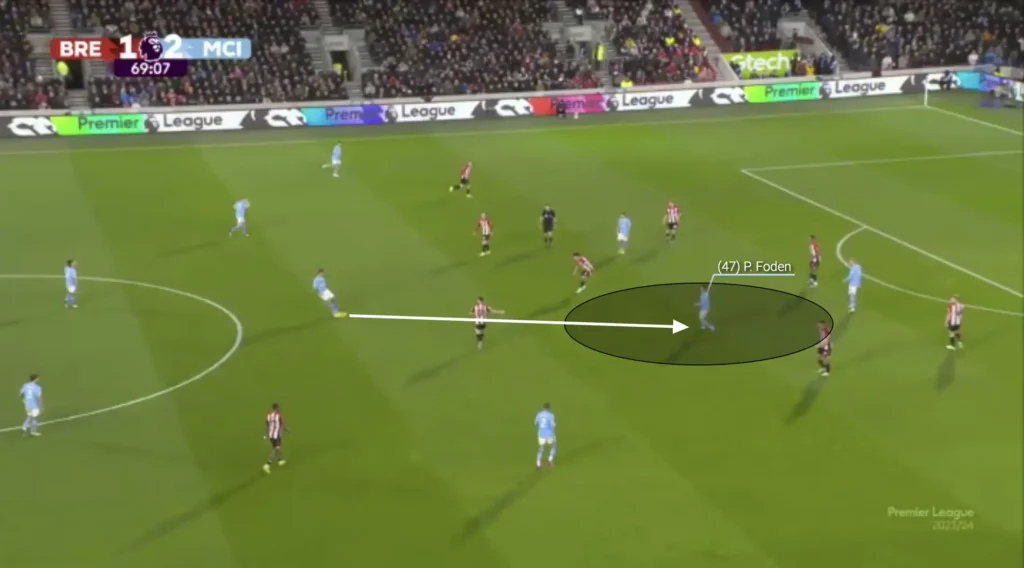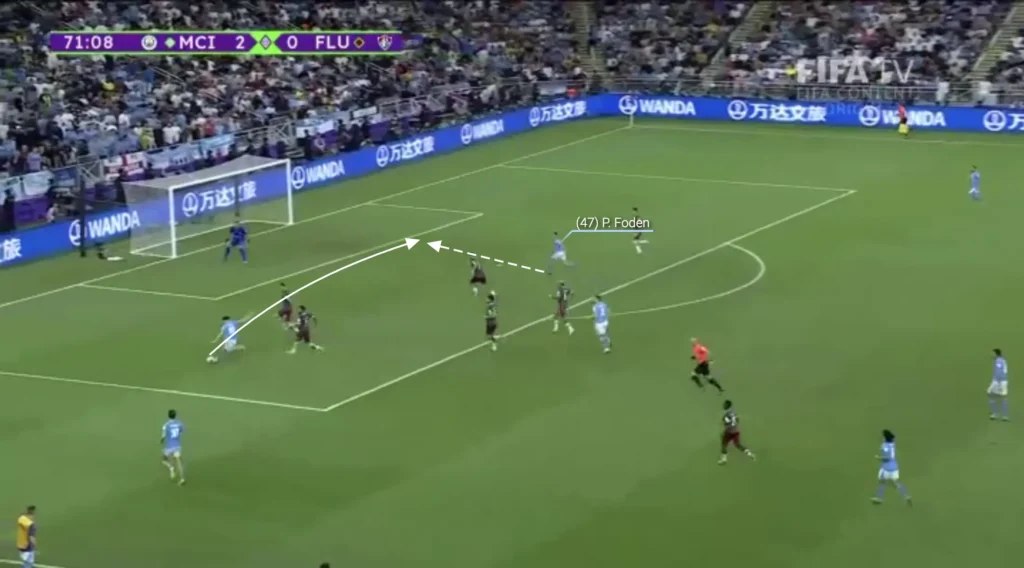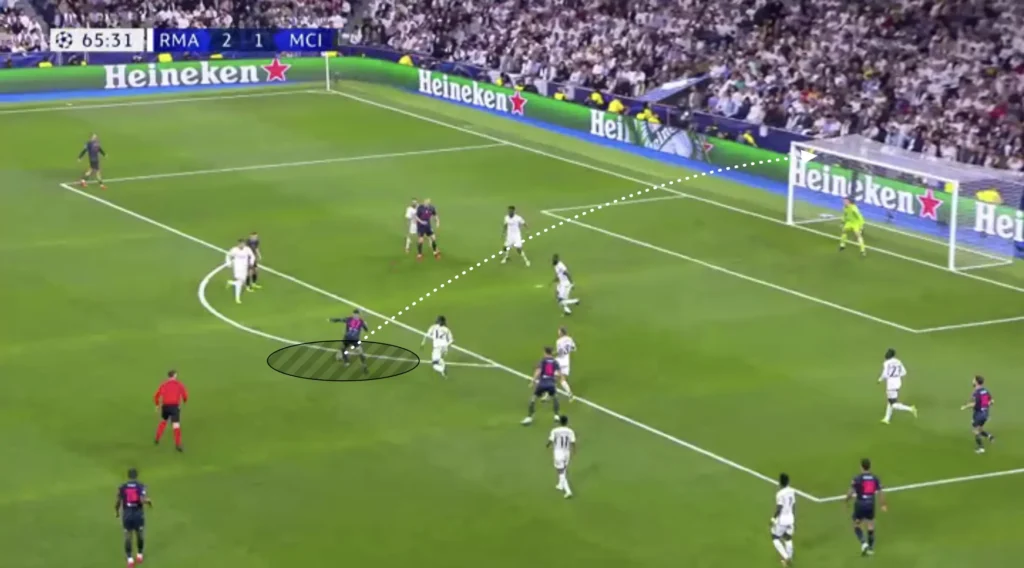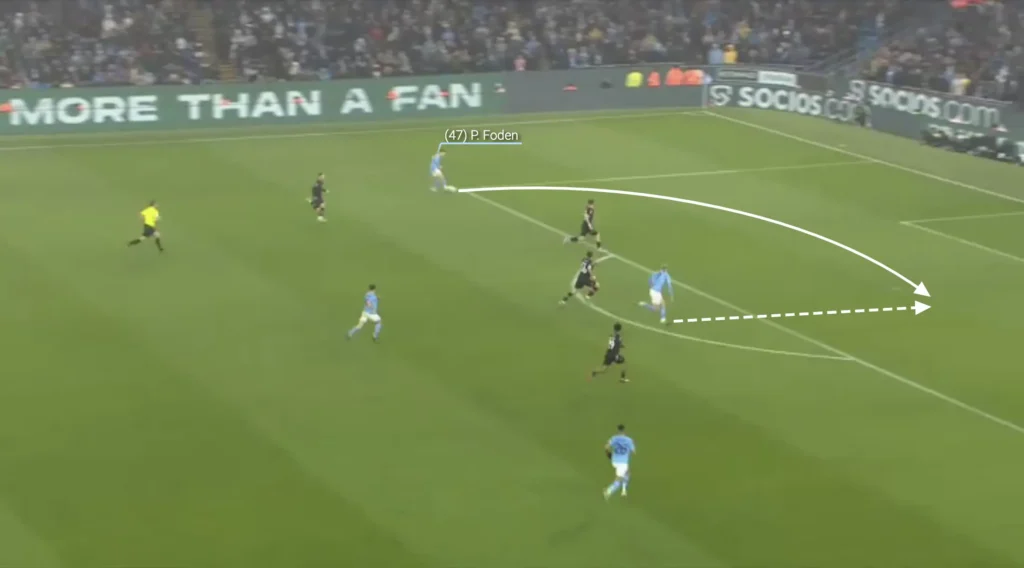Phil Foden is one of the brightest talents in modern football, known for his exceptional skill, vision, and versatility on the pitch. In this article, we delve into a detailed player analysis of Foden, examining the key attributes that make him a standout performer for both Manchester City and the England national team. From his technical prowess to his tactical intelligence, we’ll explore how Foden’s unique qualities contribute to his team’s success and why he is considered a future star of the game. Join us as we break down the elements of Foden’s game that set him apart in the football world.
Versatility
Phil Foden’s versatility is one of his standout attributes, making him an invaluable asset for both Manchester City and the England national team. Capable of playing in various positions, Foden excels as a winger;

Attacking midfielder;

Or even as a false nine:

His adaptability allows him to seamlessly fit into different tactical setups, contributing effectively whether he’s creating chances, dictating the tempo in midfield, or finishing moves in the attacking third. This flexibility showcases his football intelligence and ensures that he remains a constant threat to opponents, regardless of his position on the pitch.
Off-the-Ball Movement
Beyond his mesmerizing dribbles and pinpoint passes, Phil Foden’s off-the-ball movements add an intriguing layer to his overall playing style. His football intelligence allows him to find and exploit open spaces, creating goals and assists for his team.
Operating in the Pockets
When playing as an attacking midfielder, which is what he usually does, Foden is positioned in the pockets between the midfield and defense. He places himself between players, which can cause the defenders confusion regarding who should mark him.


Getting the ball in these spaces allows him to turn and attack the defense. Foden’s speed and technical brilliance enable many alternative ways of beating the backline and creating chances from these positions.

He will usually do this by driving at the defense for as long as possible, waiting for an opposition defender to push up. When the defender pushes up, he will either play the ball to an open teammate or dribble past the defender, creating a goalscoring opportunity.
Attacking the Half-Spaces
A massive part of Man City‘s offensive tactics is attacking space between the opposition center-back and fullback. One way they do this is by using an underlap with Foden. Man City will often, through their possession, find space for their wingers after switching play with a long ball. The winger will then attack his fullback, waiting for the underlapping run in behind from Foden. If he gets the ball from the winger, the center-back needs to make a decision. If he goes to track the run, he leaves a massive space in the box for the striker to exploit. Therefore, Many center-backs will stay in the center, allowing the winger to play the ball into the open space to an open Foden, who can find his teammates in the box with a cross.


Foden also exploits the space between the center-back and the fullback by running in and receiving through-balls from a central midfielder or the backline.

Goals
Runs into the Box
Phil Foden always gets into the box when City get up the pitch. His pace allows him to beat the defenders to the ball, which, partnered with his ability to find the open spaces, enables him to score many goals from crosses. Through constant scanning, he always sees where the defenders are moving, which allows him to see where the space is. He will run into the open space, trusting his teammates to find him with a cross, often leading to him scoring goals.


Long Shots
Phil Foden’s long shots are one of his greatest assets and a dominant source of goals. Man City often push down the opposition’s backline through their dynamic wing play, creating space for Foden in front of the backline.
From there, he will use his wand of a left foot to score powerful long shots aimed far in the top or the bottom corner.


The threat of these long shots also forces the opposition defense to push up and close the space for Foden, which opens the spaces inside the box for his teammates to exploit.
When playing as a winger, Foden gets into these positions by cutting inside and driving past his defender. First, he waits for an attacking midfielder to make an underlapping run, dragging away an opposition midfielder. The space inside will then be open, allowing Foden to use his pace to drive past the defender into the open space where he will take a shot.


Assists
Back Post
Foden gets many of his assists from crosses at the back post. Haaland and the other City forwards often position themselves at the back post in crossing situations to stay on the blindside of their defender. The back post is where the space is, and the center-back’s lack of vision often makes it uncontested. In addition, the player defending that area is usually the fullback, who presumably will be a weaker aerial defender than the center-backs.
When he is behind the opponent’s backline, Foden tries to find the back post with low, powerful crosses between the goalkeeper and the backline. His teammate runs to the space, ready to score in an open goal. This crossing technique forces the defenders to face their own goal when trying to clear the ball. This makes it extremely difficult for them because it massively increases the risk for own goals.


Foden also tries to find the back post when positioned further out on the wing. He will perform a light chip aimed at the back post, allowing Haaland to take advantage of his incredible aerial quality.

Through-balls
Foden’s accurate passing allows him to find his teammates with through-balls. He will produce unbelievable passes, beating the defense and creating opportunities for his teammates.


Pressing
Phil Foden’s pressing is a vital aspect of his game, showcasing his energy and tactical awareness. His ability to apply pressure on opponents high up the pitch disrupts their build-up play, forcing turnovers and creating attacking opportunities for Manchester City. Foden’s quickness and anticipation allow him to close down spaces effectively, making it difficult for defenders to find passing options.


Foden’s counter-pressing ability is also a key aspect of his game that sets him apart from many players his age. His quick reactions, agility, and relentless work ethic enable him to immediately pressure opponents upon losing possession, often regaining the ball in advanced areas. This disrupts the opposition’s transition while creating immediate scoring opportunities for his team.

Final Thoughts
In conclusion, Phil Foden’s development and impact on the field highlight his exceptional talent and potential to become one of the finest players of his generation. His versatility, technical skills, and football intelligence make him a crucial asset for Manchester City and the England national team. Foden’s ability to influence the game in various roles, whether as a winger, midfielder, or even a false nine, showcases his adaptability and understanding of the game.
As he matures and gains experience, Foden’s tactical awareness and decision-making will only improve, solidifying his status as a key player in any tactical setup. His performances have already drawn comparisons to some of the game’s greats, and with consistent development, he is poised to achieve even greater heights.
